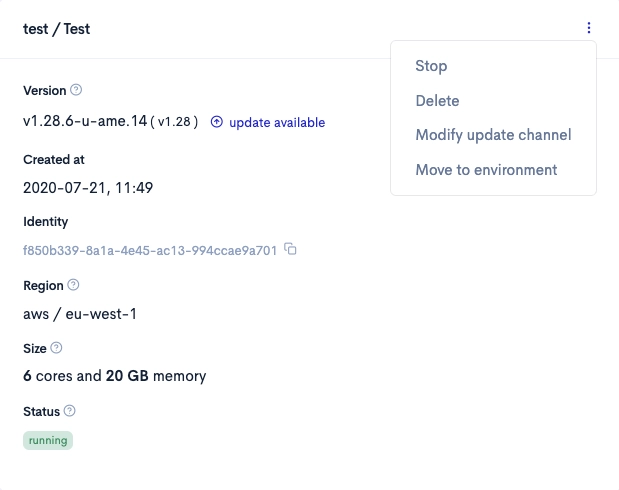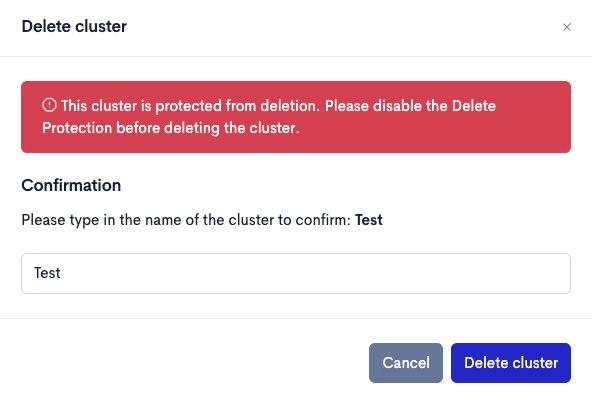Cluster Detail page
Feature state: stable
The Avisi Cloud Console provides an overview of all clusters within an organization, displaying important information such as the Kubernetes version, region, size (cores and memory), status, and settings of each cluster.
Cluster Details
When viewing an individual cluster, you can access detailed information about the cluster’s configuration, including: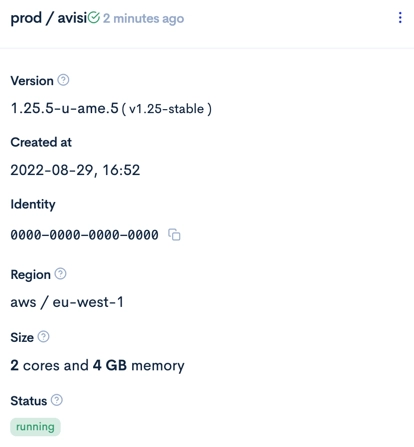
- Version: The version of Kubernetes that the cluster is running.
- Created at: The date and time at which the cluster was created.
- Identity: The unique identity of the cluster. This is used to identify the cluster when using the Avisi Cloud CLI.
- Region: The geographic region where the cluster is located.
- Size: The number of cores and amount of memory allocated to the cluster.
- Status: The current status of the cluster, such as whether it is running or not.
Settings
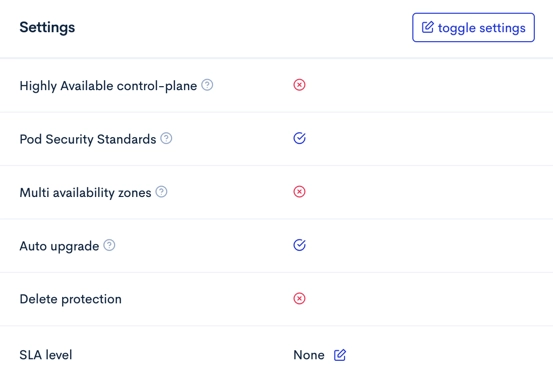
Advanced settings that can be configured for the cluster, including the following:
- Highly available control-plane: Whether the cluster’s control-plane is configured to be highly available.
- Pod Security Standards: Whether the cluster is configured to enforce certain security standards for pods.
- Multi availability zones: Whether the cluster is configured to spread resources across multiple availability zones for increased resilience.
- Auto upgrade: Whether the cluster is configured to automatically upgrade to the latest version of Kubernetes.
- Delete protection: Whether the cluster is protected from accidental deletion.
Addons
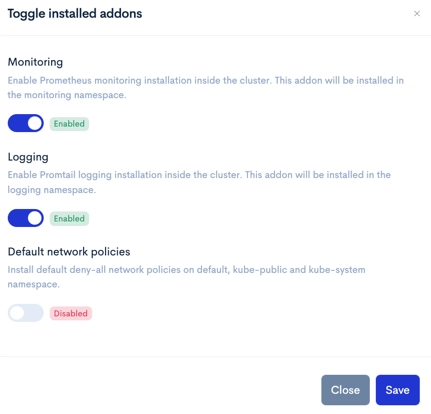
Additional services that can be enabled for the cluster, such as monitoring, logging, and default network policies.
Node pools

Information about the node pools within the cluster, including the following:
- Type: The type of nodes in the pool.
- Number of nodes: The number of nodes in the pool.
- Autohealing: Whether the pool is configured to automatically recover from node failures.
- Annotations: Additional metadata that can be attached to nodes in the pool.
- Taints: Taints that can be applied to nodes in the pool to control pod scheduling.
- Labels: Labels that can be applied to nodes in the pool for easier organization and management.
- Auto scaling: Whether the pool is configured to automatically scale the number of nodes.
- Availability zone: The availability zone in which the nodes are located.
IP Restrictions
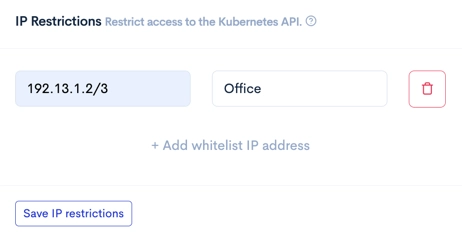
Delete cluster
